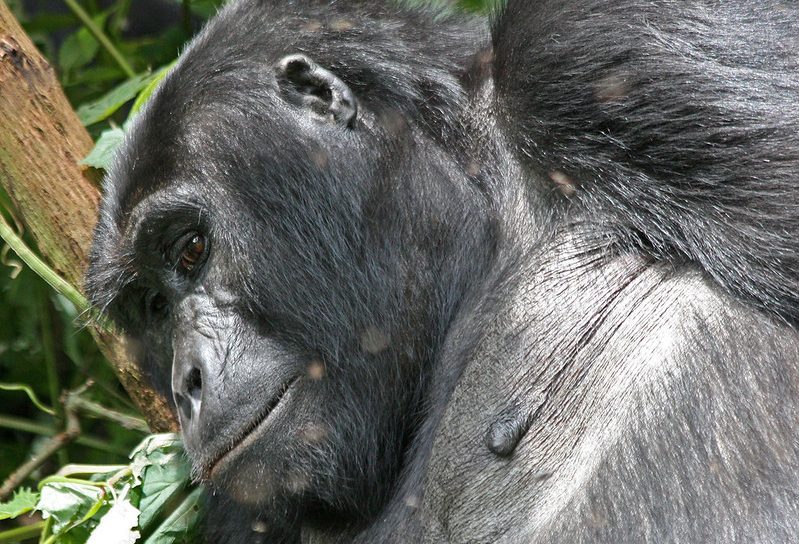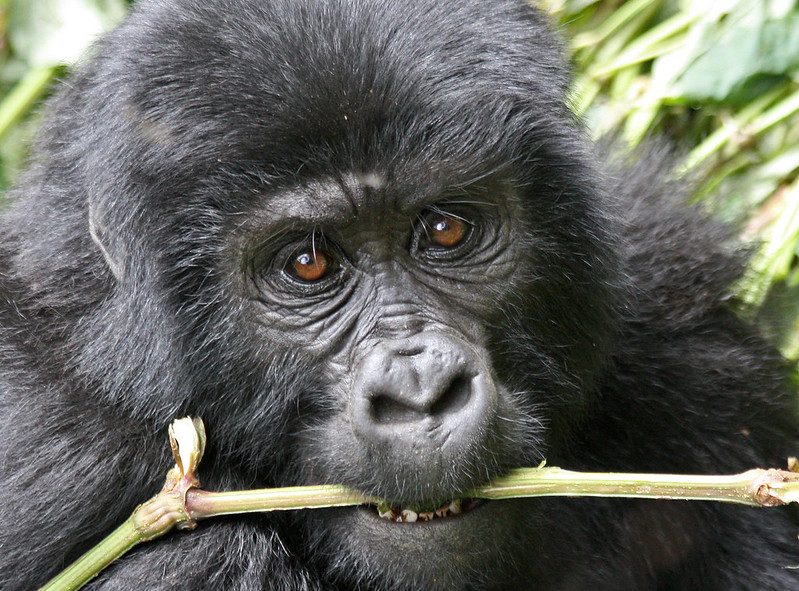Habitats of Mountain Gorillas
- September 12, 2024
- Posted by: chosen@202q
- Category: Prepare To Travel Tips

Habitats of Mountain Gorillas
Mountain gorillas are found in the equatorial and tropical rainforests of Rwanda, Congo, and Uganda in East and Central Africa.
Next to chimpanzees and bonobos, gorillas are the closest relatives of humans, sharing 98% of their DNA.
Mountain gorillas are a primate species that is endangered, with fewer than 1000 individuals remaining in the wild.
The main threats to mountain gorillas are poaching and habitat destruction, both of which are human-caused for various reasons.
Habitat of the Mountain Gorilla

The dominant silverbacks, who also defend the group from attacks, plan the group’s daily activities.
At the age of 8–12 years, female mountain gorillas reach sexual maturity prior to their male counterparts.
Their birth rate is extremely low, with only 1-2 fertile days per month, and a female can produce only approximately 4-6 offspring in her lifetime.
Gorillas undergo gestation for 8–9 months.
Habitats of Mountain Gorillas
Mountain gorillas inhabit the volcanic peaks of the Virunga massif ranges, which encompass Volcanoes National Park in Rwanda, Virunga National Park in Congo, and Bwindi and Mgahinga National Parks in Uganda.
They are found in altitudes between 8,000 and 13,000 feet.
In contrast to other great primates, mountain gorillas possess thick and long fur that enables them to endure cold temperatures that can reach below freezing.
Mountain gorillas consume shoots, bark, leaves, fruits, stems, and pith that are located on the foothills of the volcanoes they inhabit.
Mountain gorillas are unable to endure prolonged periods of time in sanctuaries; they require their natural habitats, which include dense forests, rainforests, and tropical forests. Rainforests are composed of four layers: the emergent layer, canopy layer, understory layer, and forest floor layer.
Mountains gorillas inhabit the forest floor layer of rainforests; however, all strata contribute to their survival.
The habitat of mountain gorillas is at risk as a result of human settlement, mining, deforestation, bush burning, land clearing for industrial use, and cultivation.
Mountain gorillas had to move to higher elevations because humans were encroaching on their habitat. These locations are extremely frigid and unfavorable, which has resulted in the transmission of diseases such as pneumonia.
On a daily basis, gorillas construct nests on the ground by utilizing tree branches and foliage. Until the age of four, young gorillas reside in a nest with their mothers. After this, they are permitted to sleep in their own nests, but they remain in close proximity to their mothers.
They can also construct nests to rest during the daytime and occasionally sleep in the same nests, particularly during the rainy season.
In Their Natural Environment: Trekking Gorillas
In Uganda, gorilla trekking is possible in Bwindi and Mgahinga National Parks, Volcanoes National Park in Rwanda, and Virunga National Park in Congo.

To prevent disappointment as a result of a lack of permits upon arrival in the country where you intend to trek gorillas, gorilla permits must be obtained three months prior to the final gorilla trekking day.
The cost of a gorilla permit is contingent upon the country in which you intend to conduct a gorilla expedition.
Rwanda charges $1500 per person, Uganda charges $800 per person, and the Democratic Republic of Congo charges $400 per person.
The optimal periods to visit are from June to September and December to February, as all national parks that offer gorilla trekking experiences the same climate.
